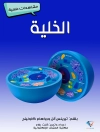Plant microtubules are key elements of cell growth, division and morphogenesis. In addition to their role in plant development and architecture, they have emerged as regulatory elements of signalling and important targets of evolution.
Since the publication of the first edition of Plant Microtubules in 2000, our understanding of microtubules and their manifold functions have advanced substantially. Consisting of the following three parts, this book highlights the morphogenetic potential of plant microtubules from three general viewpoints: Microtubules and Morphogenesis: control of cell axis during division and expansion, cross-talk with actin filaments, mechanical properties of the cell wall. Microtubules and Environment: the role of microtubules during the sensing or response of environmental factors such as pathogens or abiotic stresses. Microtubules and Evolution: complexity and specialization of plant microtubules in the context of plant evolution.
The book is an invaluable source of information for researchers as well as for graduate and advanced students.
Tabela de Conteúdo
Microtubules and Morphogenesis.- Control of Cell Axis.- Crossed-Wires: Interactions and Cross-Talk Between the Microtubule and Microfilament Networks in Plants.- Microtubules and Environment.- Microtubules and the Control of Wood Formation.- Microtubules and Pathogen Defence.- Microtubules and Viral Movement.- Microtubules as Sensors for Abiotic Stimuli.- Microtubules and Evolution.- Plant Tubulin Genes: Regulatory and Evolutionary Aspects.- Microtubules and the Evolution of Mitosis.












